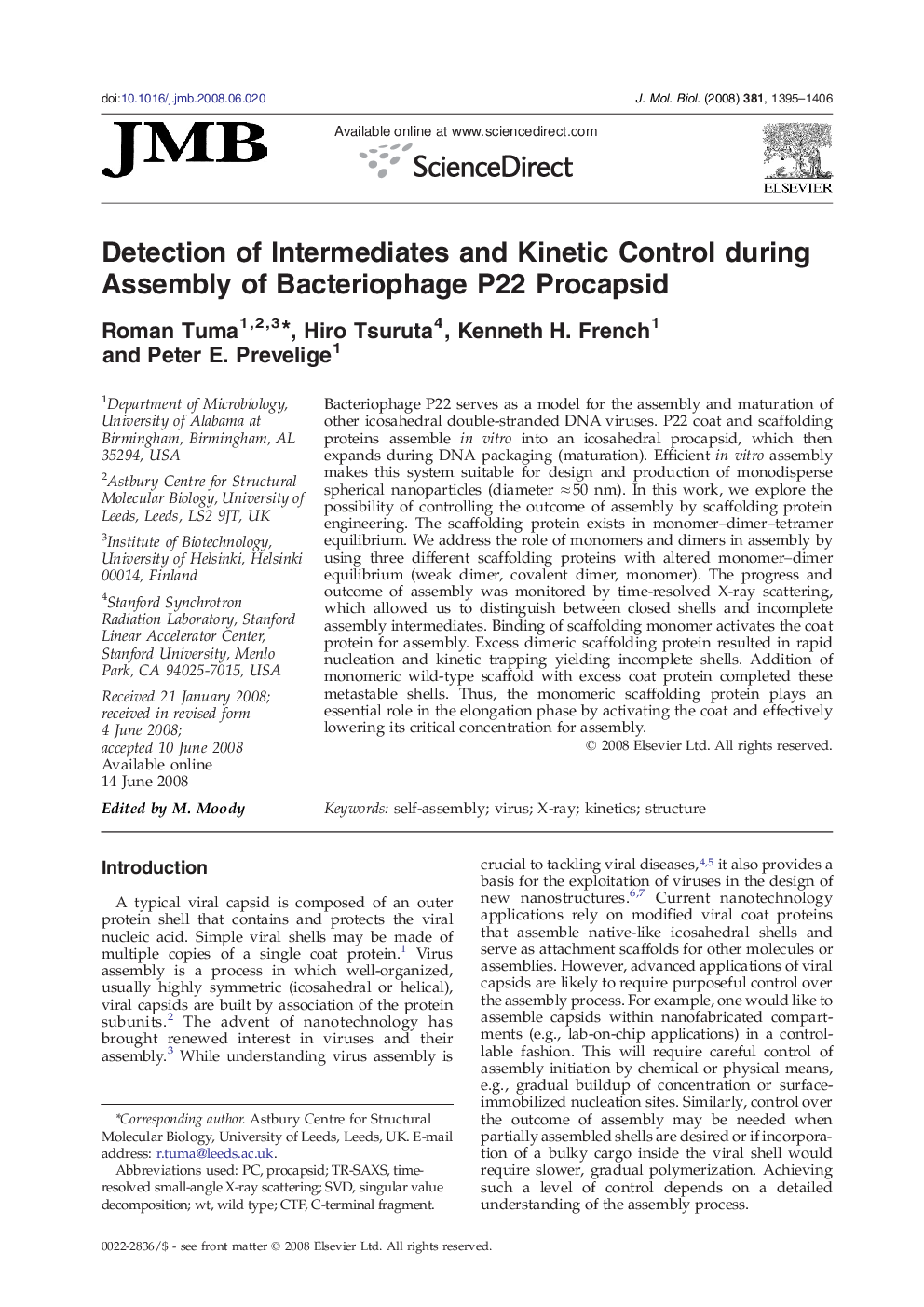| Article ID | Journal | Published Year | Pages | File Type |
|---|---|---|---|---|
| 2187302 | Journal of Molecular Biology | 2008 | 12 Pages |
Bacteriophage P22 serves as a model for the assembly and maturation of other icosahedral double-stranded DNA viruses. P22 coat and scaffolding proteins assemble in vitro into an icosahedral procapsid, which then expands during DNA packaging (maturation). Efficient in vitro assembly makes this system suitable for design and production of monodisperse spherical nanoparticles (diameter ≈ 50 nm). In this work, we explore the possibility of controlling the outcome of assembly by scaffolding protein engineering. The scaffolding protein exists in monomer–dimer–tetramer equilibrium. We address the role of monomers and dimers in assembly by using three different scaffolding proteins with altered monomer–dimer equilibrium (weak dimer, covalent dimer, monomer). The progress and outcome of assembly was monitored by time-resolved X-ray scattering, which allowed us to distinguish between closed shells and incomplete assembly intermediates. Binding of scaffolding monomer activates the coat protein for assembly. Excess dimeric scaffolding protein resulted in rapid nucleation and kinetic trapping yielding incomplete shells. Addition of monomeric wild-type scaffold with excess coat protein completed these metastable shells. Thus, the monomeric scaffolding protein plays an essential role in the elongation phase by activating the coat and effectively lowering its critical concentration for assembly.
